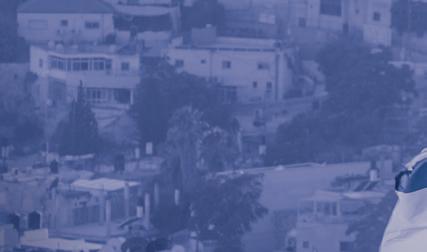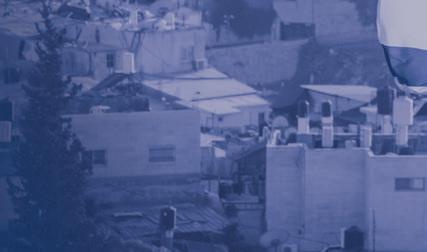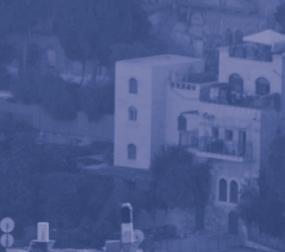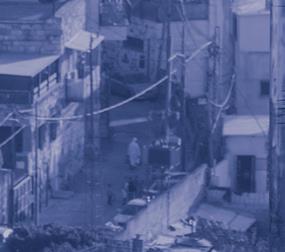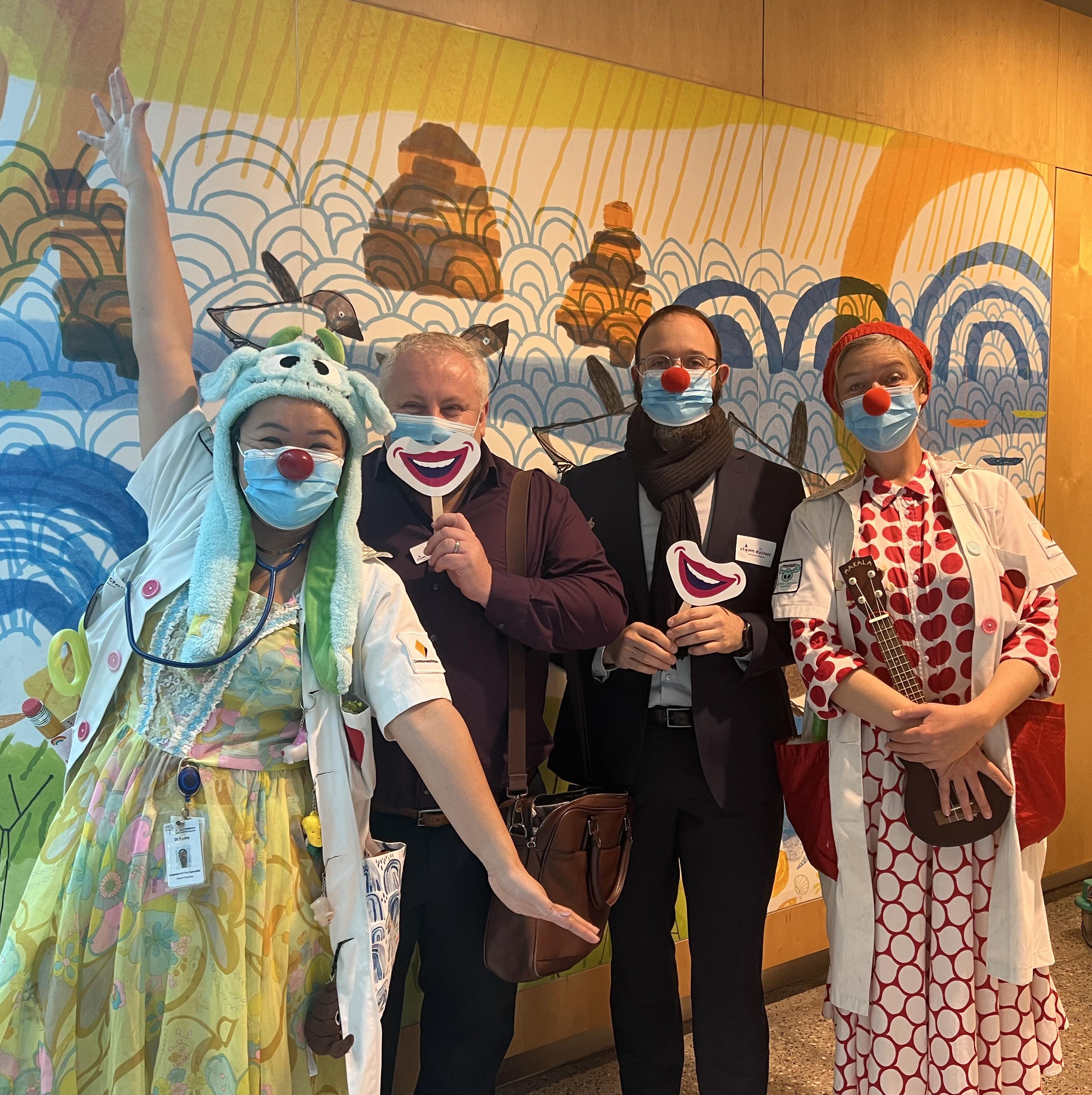
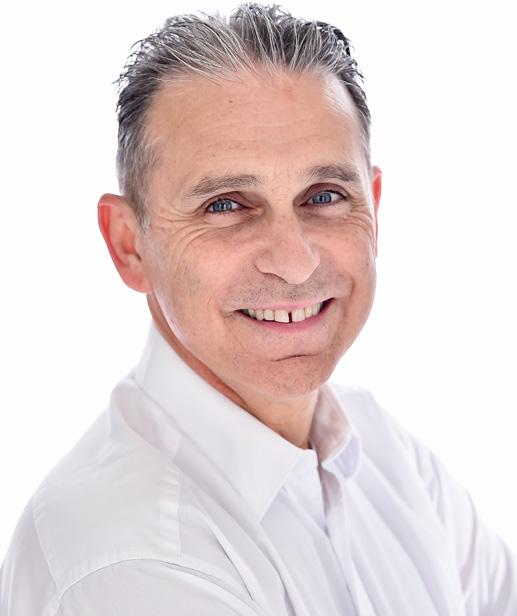

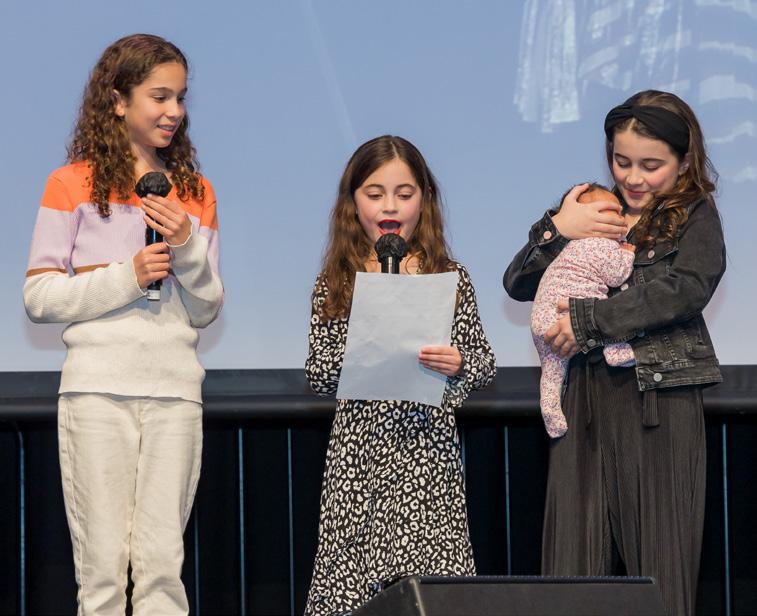
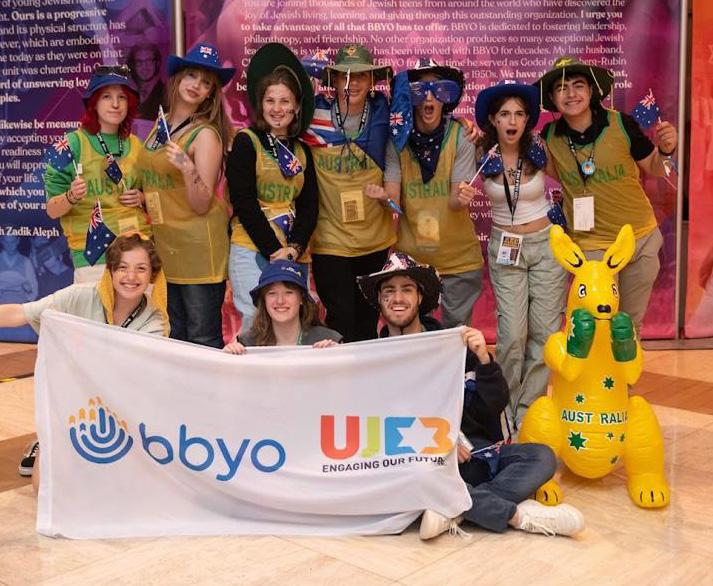
Rising from adversity






Rising from adversity
One of the first researchers into this area was, himself, a Holocaust survivor. Viktor Frankl became a psychiatrist who developed logo therapy, a psychotherapy that describes a search for life’s meaning as the central human motivational force.
Many people face adverse events or undergo a personal crisis that results in suffering. Most people, especially those in the first world, do not know how to deal with suffering.
Just like we need to accept that change is a part of life, so too is suffering. There is no formula on how to manage it, rather through our personal journeys and value systems we can create individual mechanisms to help us through tough times.
Frankl said that if a person cannot find meaning in their suffering they will
We are so pleased that this broad-based Judaica quiz, compiled by the erudite and engaging Rabbi David Freedman, has garnered such a wide following since its inception. Thank you to so many readers for your ongoing positive feedback. This month within this Judaica quiz we can explore so many facets of the Jewish world – from all-things-Israel to global Jewish initiatives to politics and prayer.
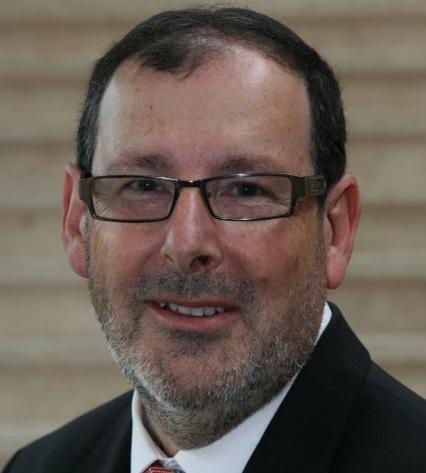
It is so much fun to draw on the collective knowledge of family and friends around the Shabbat table to answer historical questions across the centuries, along with testing our geography and educational insights. We can also answer – or attempt to answer - questions posed delving into the wisdom of our sages too. Of course, all is offered via a sacred Jewish lens and all are original questions prepared just for you and your nearest and dearest.
1. What colour was the Yam Suf?
2. Which building was located on HaYarkon Street, Tel Aviv until June 2018?
3. Donald Trump’s granddaughter recently celebrated her Bat Mitzvah –what is her first name?
4. How long after the capture of Beer Sheva (October 31, 1917) by the British and Anzac servicemen did Lord Balfour send the letter (which became known as the Balfour Declaration) to Lord Rothschild?
tend to despair. However, if meaning is found, they can turn their tragedies into achievement, as a way of overcoming. He also believed that every day we must ask ourselves who we are and who we want to be in order to become
the best version of ourselves. German philosopher Frederich Nietzsche said: “He, who has a why to live for, can bear almost any how”. The answer to “why” to live is “hope”. As a concept, hope helps people better cope with difficult
5. Julian Leeser MP is the Federal Member for which NSW constituency?
6. Which prayer is known in Hebrew as Birkat Hamazon?
7. In which year was the first kibbutz, Degania Alef, founded:
a) 1900
b) 1905 or
c) 1910?
8. Which famous Chassidic Rebbe said, “If you won't be better tomorrow than you were today, then what do you need tomorrow for?”
10. The Machzor Vitry is a medieval prayer book that incorporates legal rulings, composed by Rabbi Simcha of Vitry, a French scholar and disciple of Rashi. In which century was it composed?
11. Which former record producer and convicted murderer, born in 1939 to a Russian/American Jewish family died in prison in 2021 from Covid 19?
12. Which three biblical books are ascribed to King Solomon?
13. Who founded the Bais Ya'akov
or stressful times and to adapt better to adversity. With hope, they don’t just wish for something good to happen. They have a concrete plan to make it happen.
We can use the following strategies to give us hope. First, we need to establish a clear, achievable goal. In turn, that gives us the ability to act on or do something productive.
Next, we need to harness our uncertainty. In many cases, when we are uncertain about an outcome, we become anxious and lose hope. In fact, for hope to enter the equation, we need to be able to perceive the possibility of success.
Hopeful people seek out positive messages and images. They spend less or no time countenancing the negative, for doing so can become a self-fulfilling prophecy.
We can stay hopeful by connecting with others who hold us accountable and remind us of why our struggles matter.
Hope also requires trust. Cultivating and sustaining hope requires us to gather evidence from our own lives and the world at large and use that to guide our plans, pathways and actions.

Anne-Marie Elias is a psychologist in clinical practice for 25 years.

17. Isaac Herzog is the 11th President of Israel. Complete the following sentence: “He is the first president to be born in Israel after ...”
18. Which two Israeli politicians founded Likud in 1973?
19. Jerry Springer, US TV personality who died in April 2023, was raised in New York –but born in London to German Jews who had escaped the Holocaust. In which unlikely place was he born during the Blitz?
20.In 1946 which Jewish educational institution adopted Torah Umadda (Torah and Knowledge) as its slogan?
21. Which town, adjacent to Newcastle upon Tyne, in the northeast of England, houses a world famous Yeshiva?
22.What is the connection between Boris Volynov and Ilan Ramon?
23. Which city in Israel is often known as the ‘Capital of the Valley?
a) Afula
b) Eilat
a) The Baal Shem Tov
b) Rav Nachman of Breslov
c) The Lubavitcher Rebbe, Menachem Mendel Schneerson?
9. During the exodus of Soviet Jews from the Soviet Union, who made the following statement speaking in Russian while visiting Australia: “I never wanted them to leave. They were our most educated people. We had invested so much in them. We needed them. I wanted them to stay. We lost so much when they left us. But I had no choice. The world wouldn't let us keep them”?
educational movement for girls and brought about a revolution in the status of women in Orthodox Judaism?
14. Avraham Shabsi Hakohen Friedman is a well-known Israeli performer – by what name is he better known?
15. Bank Hapoalim is the second oldest bank in Israel. In which decade was it founded?
16. Operation Moses and Operation Solomon brought Ethiopian Jews to Israel – how many years between the two operations?
c) Hebron
d) Kfar Saba
24.According to the Talmud who composed the Book of Job?
25. Which popes visited Israel in
a) 1964
b) 2000
c) 2009
d) 2014?
Good luck. Enjoy. Hopefully, learn something new about your Jewish heritage and tradition.
DAVID FREEDMAN
UJEB’s secondary school branch, UJEB High, provides educational and social opportunities for Jewish teenagers in Years 7 to 12.
UJEB High aims to engage today’s Jewish teens where they are and empower them to connect with their peers and their own Jewish identity.

Having transitioned to the teenled model in the past few years, UJEB High showcases opportunities locally, nationally and internationally.
Local
UJEB has been running a Jewish cultural lunchtime, J-Lunch (formally known as JSN), in Victorian secondary schools for more than three decades.
In fact, UJEB’s executive principal, Itzik Sztokman, was a JSN madrich in 1991.
Now running in eight schools, J-Lunch offers a weekly program and “hang out space”, enabling students to link up with their peers and learn more about Jewish culture. J-Lunch participant Daniel Arndtheim’s J-Lunch experience started in 2021, when he was in Year 7 at Glen Eira College.
“My UJEB experience made me want to continue my journey through lunchtime programs in school to connect with other Jews from various year levels who I hadn’t met before.
BBYO International, a worldwide, pluralist teen-led movement.
Through the lens of “teens engaging teens”, BBYO participants develop hadracha skills to run events and opportunities for other Jewish teens across the community.
Now with chapters in Melbourne, Sydney and, soon to be, Canberra, BBYO empowers UJEB teens to take engagement into their hands and nourish their Jewish identity in ways that inspire them.
For Alicia King, Nesiah (president) of BBYO Melbourne 2023, BBYO has provided a community throughout her Jewish journey.
5,000 other Jewish teens from across 60 countries at the annual BBYO International Convention, which is rotated through American cities.
UJEB has sent cohorts to the annual convention in Dallas, Denver, Orlando and Washington DC.
There, they have experienced sightseeing, community stays, celebrity visits, concerts and more.
For students wanting to deepen their hadracha learning, they can travel to the International Leadership Training Conference in Pennsylvania.
“The leaders play games and teach us about the Jewish religion while we eat our delicious challah.
“It has created a way to get in touch with my Jewish identity,” Daniel Arndtheim said. For younger students at non J-Lunch schools, UJEB offers Shesh Social, a monthly Year 7 and 8 program for new high school students to engage with its madrichim and celebrate Jewish festivals. UJEB High also runs regular events, including chaggim and Shabbatons.
National UJEB houses and powers BBYO Australia, the Australasian branch of
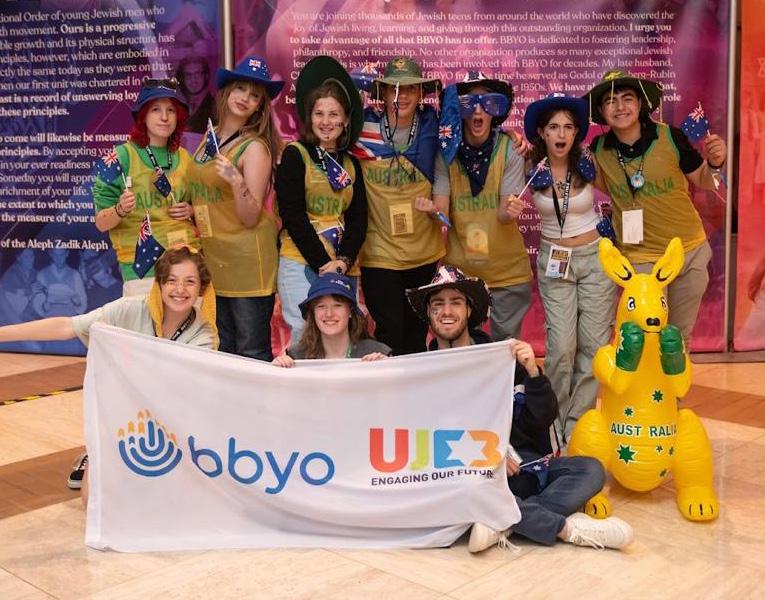
“My relationships with teens and other leaders are just so beautiful and genuine. BBYO really allowed me to connect with them,” Alicia said.
International
UJEB’s flagship international program is the Ketsev Israel Program, a five-week Israel experience for Year 10 students.
Open to students from Victoria, South Australia, Tasmania, Western Australia and beyond, Ketsev not only introduces young people to the wonders of Israel and Jewish history, but fosters relationships with a variety of groups and organisations across the country. Students can unite with more than
A three-week hosted camp, participants can broaden their leadership and strategic skills. Then, they can support and lead their communities back home.
Harley Kaufman, an attendee on the 2022 and 2023 International Conventions, speaks highly of the experience of connecting with his peers globally.
“I’m still in touch with them. There were entertaining and unique leadership experiences with guest speakers and performers,” Harley said.
To learn more about UJEB programs, go to https://www.ujeb.org.au/
Raoul Salter is among 43 members of the Jewish community on the 2023 King’s Birthday Honours’ list.
He received a Medal of the Order of Australia (OAM) for service to the community through a range of organisations. A partner at commercial real estate firm Gross Waddell ICR, Raoul has been an active member of the Jewish community for decades.

A longstanding Blue Box collector, he emcees community events, where he has also been the auctioneer.
He was a board member at Brighton Hebrew Congregation for a decade and has been heavily involved in Saltpillar Theatre since 1988.

His ties to the Royal Children’s Hospital date back a quarter of a century.
Raoul Salter spoke with The Melbourne Jewish Report.
Congratulations, Raoul. What does the award mean to you and your family? How fulfilling is it?
It has yet to really sink in, but I think it probably means to me what it may mean to anybody who wins an award like this – it is humbling and clearly a great honour. In terms of fulfillment, it is incredible to receive acknowledgment when you don’t expect it.
How and when did you find out about the King’s Birthday Honour?
Now here is a funny story with possible sliding door moments. I received an email in March advising me that I had been nominated and seeking my acceptance or otherwise. I immediately thought it was junk or spam and was about to delete it. Just before I did, I asked my partner if she thought it was genuine. As she spent many years working at the Shrine of Remembrance and in her capacity saw quite a number of these nominations, she assured me that it was real.
I subsequently received an email a few weeks ago with advice that the
nomination had been approved, but was sworn to secrecy until the Kings Birthday Honours’ list was announced. Why the long and strong commitment to community service?
As a kid, I used to go Blue Box (JNF) collecting with my dad on Sunday mornings. My siblings and I learned at an early age that giving back was extremely important and to never forget how lucky we are. I also grew up with a sense of community via the activities of both my maternal and paternal grandparents who were equally good role models. In turn, I always took my son collecting with me, with the aim of instilling in him the same values by which I was raised.
You have focused heavily on Jewish organisations and pursuits. Why is that important to you?
Again, probably because of my early exposure to community-based activities. Having said that, I apply the same level of energy to industry activities. That has included seven years on the Real
Estate Institute of Victoria (REIV) auction committee and acting in the capacity of judge in both novice and senior annual auction competitions, along with mentoring industry colleagues through the Property Council of Australia.
Talk with me a little about each of the organisations in which you have been involved (JNF, The King David School, Brighton Hebrew Congregation, Saltpillar Theatre and the Royal Children’s Hospital) and what they mean to you.
JNF – I think I’ve covered that off, but we grew up with a Blue Box in the house and both mum and dad were keen to teach us early that whatever you receive, you should share. They were both very generous individuals.
The King David School – As a result of having a child at the school I decided early on that I would like to contribute and have an involvement in the school. In one instance that led to regret when I took part in a sports’ day parents’ running race and managed to tear two tendons off the glute bone, requiring surgery. Perhaps my contribution went too far that day. Putting that aside, the school prides itself on a sense of community and I happily contribute to that. Other activities over the past 11 years that are far less dangerous have included being emcee of the annual fete, hosting trivia nights and other events, and auctioning items to raise funds.
Brighton Hebrew Congregation – This one is steeped in history as it was a congregation started by English expats, including my paternal grandparents. My late grandfather was the first president when the shule was built where it stands now. His shule seat was passed down to my late father, who also held a board position for some years, which in turn became mine. I felt like it was my duty to contribute.
Saltpillar Theatre – This has been a passion that has lasted many decades and I could write a book about it. I, along with other stalwarts including,
and mission of informing and educating people on the dangers of prejudice, racism and bullying.
Courage to Care CEO Michael (Mike)
Zervos has been honoured with a Medal of the Order of Australia (OAM) in the King’s Birthday Honours.
Mike received the award for his extensive involvement in the not-forprofit sector, including leadership roles at the Make a Wish Foundation, Alannah and Madeline Foundation, Guide Dogs Victoria and Courage to Care.
A certified practising accountant (CPA), Mike was pivotal in creating the Alannah and Madeline Foundation’s eSmart programs in schools.
The long-time Bayside resident and marathon runner was appointed to head up Courage to Care in August 2018.
Mike said he was particularly drawn to the organisation’s Upstander message
At the same time, Courage to Care volunteer Louis Roller has also been recognised as a Member of the Order of Australia (AM).
Louis has been honoured for significant service to the pharmacy profession through education and governance.
As a child Holocaust survivor, Louis joined Courage to Care in February 2018 and shares his story with students.

Courage to Care reaches into schools and the broader community. More than 160,000 pupils have participated in the group’s programs.
If you would like to find out more about Courage to Care, go to www. couragetocare.org.au
but certainly not limited to, co-chair Steven Curtis, treasurer Amanda Braun and producer Niki Saltzman have an unwavering commitment to perpetuating the longevity of our community’s contemporary theatre company.
It has been running for 35 years, which has surpassed its predecessor, the Habima Players and continues to be supported by our wonderful audiences year after year.
Royal Children’s Hospital – I was fortunate to be approached in 1997 to join the Centre for Hormone Research board at the hospital, which comprised medical and business heads, to explore ways to support and grow that department. It is responsible for the management of disorders of the endocrine system in children and that includes infant diabetes and obesity.
Part of my role was providing emcee and auctioneering services at fundraisers.
REIV and Property Council of Australia – I have had involvement in both of these industry organisations, as a committee member, judge and mentor, for many years.
You are known to be highly energetic, without an “off” button. Where does that energy come from?
Most likely my late father, a dentist, who was involved in many organisations and activities. He was always busy.
Where to from here? Do you intend to cut down on your commitments or keep on doing what you are doing?
As long as my contribution remains relevant, I’m not sure that I will ever “cut down” on my commitments. I enjoy the involvement and the ability to help where I can.
There are apparently two types of people – those who say and those who do. I guess I just fall into the latter category.


In honour of Reconciliation Week, The King David School Year 5 First Nations’ va'ad (committee) developed a board game called djeembana (gathering).
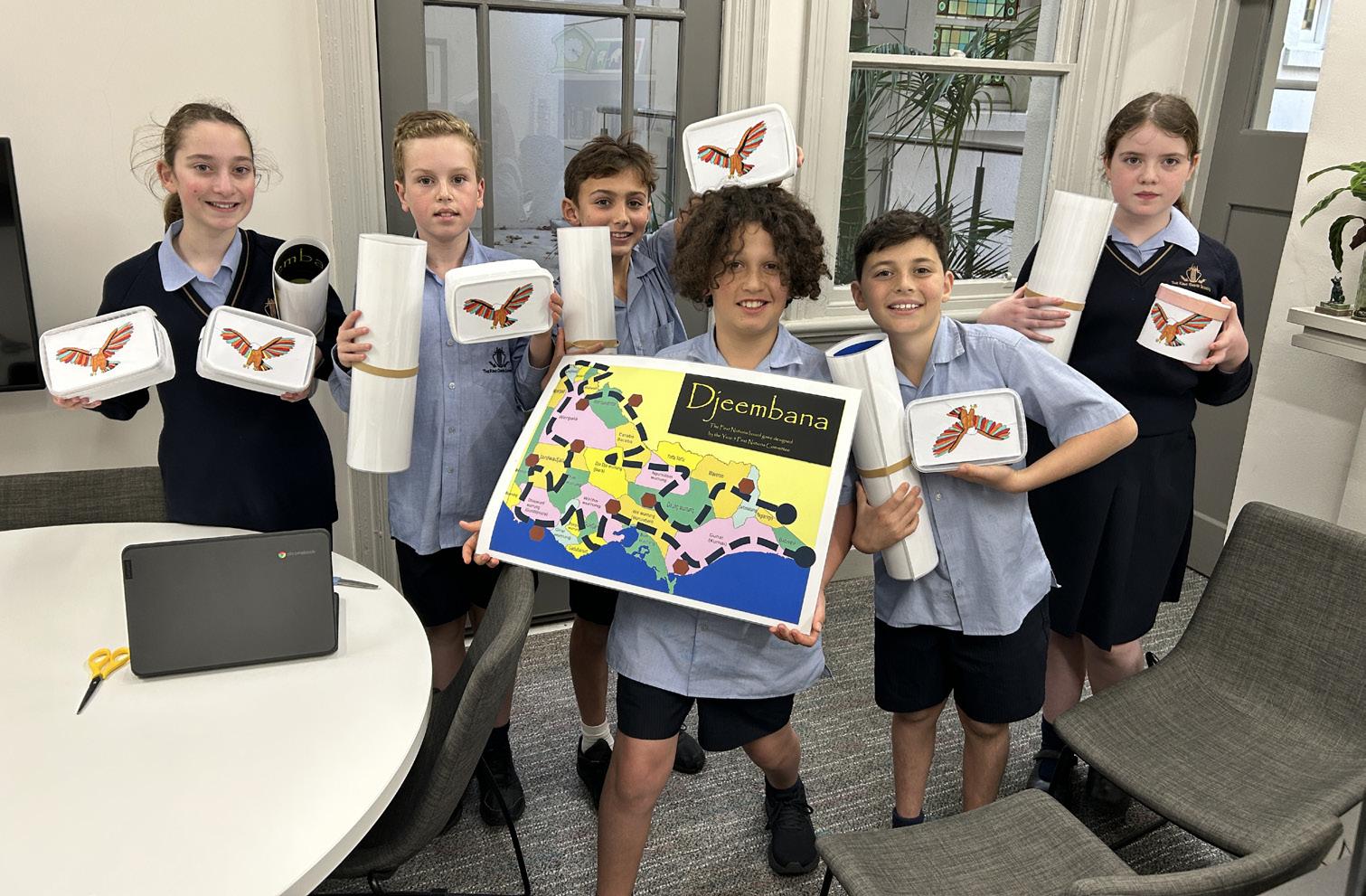
The idea behind the game was to find a creative and engaging way to teach students about First Nations’ culture.
Once the committee members came up with the concept, they set about crafting the board and the pieces.
They designed a set of rules for the game, which included advancing from space to space using feathers.
None of this could have happened without significant research into indigenous culture.
The board takes students on a journey through all Victoria’s First Nations’ peoples.
As they play the game, they collect cards that teach them about various aspects of First Nations’ culture.
Each year level at the junior school now has its own copy of djeembana.


Located in Haifa, Technion – a science and technology research university –is a world leading institute dedicated to the creation of knowledge and the development of human capital.
Among its many strengths is the Rappaport Technion Integrative Cancer Center.
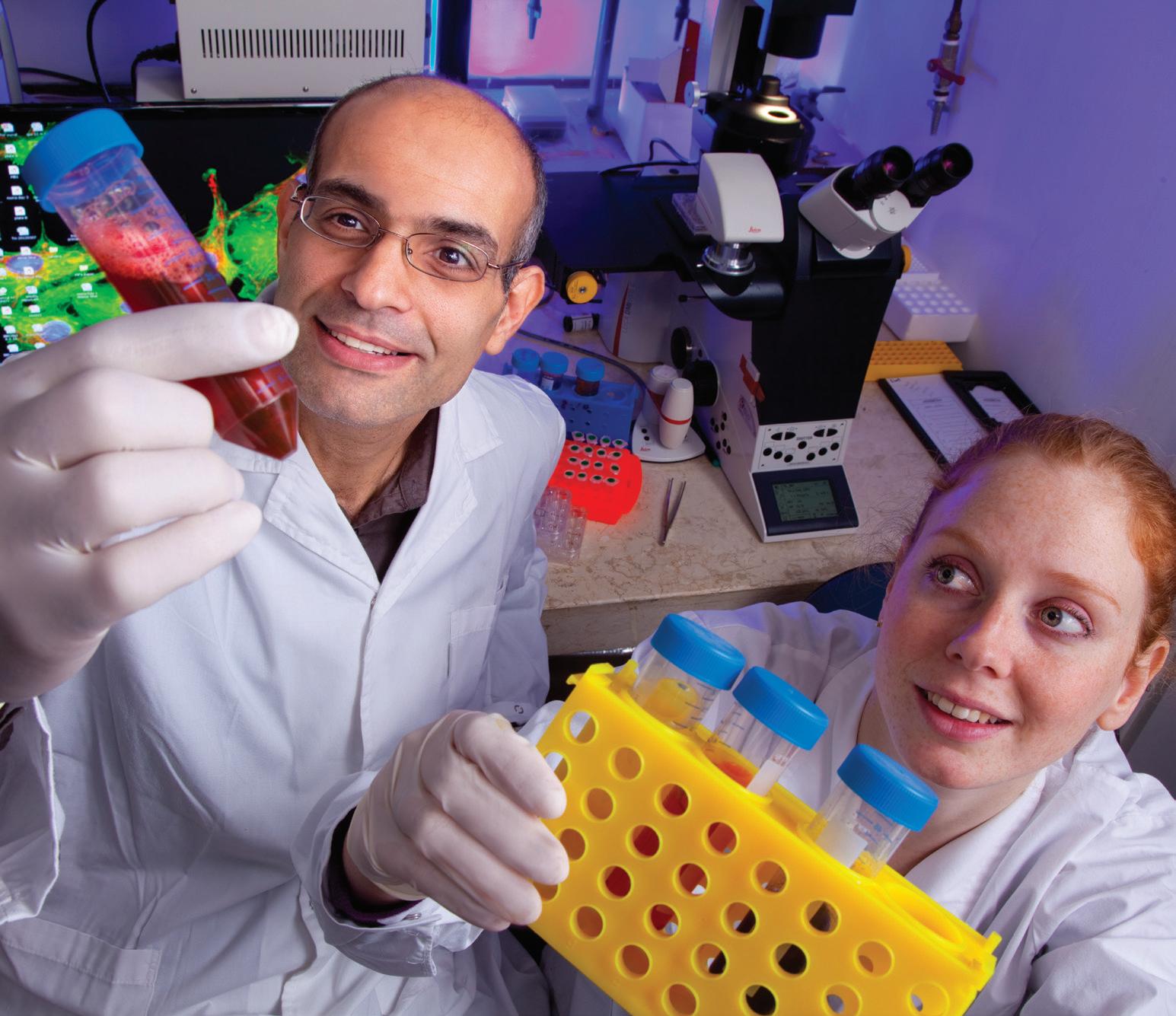
The RTICC brings together more than 75 researchers from engineering, science, and medicine, building interdisciplinary teams of scientists to fight cancer.

The Center is in the throes of recruiting at least two new leaders in the field to enhance an already strong cohort.
The RTICC connects individuals with innovative ideas in the belief that when you bring good people together good things happen.
The Centre provides an environment for its researchers to grow and prosper, to turn their work into life changing treatments for patients.
Cancer aggressiveness and metastasis – where cancer cells spread from the place where they first formed to another part of the body and form a new tumour in other organs or tissues – are the main cause of death from cancer.
Cancer originally stems from a mutated cell, but during treatment many more mutations can develop that make the tumour more aggressive and resistant to treatment.
A growing body of evidence suggests that normal tissue surrounding cancer cells provides a strong basis for the tumour to spread and metastasise.
Some of the factors supporting the resistance of tumour cells to therapy and its spread throughout different organs relate to the fact that cancer cells are varied and constantly changing.
It is the fight looking for answers that Rappaport Technion Integrative Cancer Center is involved in.
Our school empowers our students to achieve both inside and outside the classroom. Inspired and curious from early learning to VCE, our students acquire the skills and knowledge they need to thrive in the world they will graduate into.
Ketubot come in all shapes and sizes. Some are elaborate, custom designed with meticulously crafted patterns and exquisite finishes. Others are photocopied on plain paper with no colour, design or gloss. According to Jewish law, both styles, irrespective of appearance or price, are kosher, as long as the wording is accurately written and formatted. And although ketubot do vary in design and size, the words they all contain carry the same fundamental principle – the protection of a woman’s rights within marriage.
That women should be afforded equal financial rights in marriage is a given today in all western countries. Indeed, in the 21st century, we take for granted state and federal laws protecting women’s financial rights, both within marriage and following divorce. But this was not always the case. A century before the Common Era, the great sage Rabbi Shimon ben Shotach saw the need to author the ketubah and legislate it into the Jewish marriage.
Although it goes without saying that violence against women is an atrocious crime, clearly prohibited according to Halacha (see Kitzur Ch 150:13), the financial status of women
whose husbands were traditionally the breadwinners was, perhaps, less clear. It was that ambiguity the sages sought to address and they did so over 2,000 years ago by instituting the ketubah.
At a time, when so many cultures chose not to tackle the vulnerabilities of women in a male-dominated society, Judaism saw fit to enshrine in law a mechanism that would provide women financial security within a relationship to which they contributed in non-monetary ways.
The ketubah thus symbolises a Jewish man’s legal and moral obligations towards his soul mate. Words and undertakings are not enough. It requires physical action and the ketubah is the vehicle through which this is achieved.

But the ketubah carries an even deeper meaning – one that goes far beyond its legal implications.
The marriage between a Jewish man and woman is the microcosm of the relationship between G-d and His people, Israel. The chuppah ceremony occurred at Mount Sinai. G-d was the groom and we were His bride.

The ketubah was the Book of the Covenant (the Torah), which Moses read to the people just before we tied the knot with our Creator. And it has been that ketubah, which has sustained our marriage to G-d.
There are few more celebrated milestones in life than marriage. It offers the opportunity to deeply connect with another person, build a home, nurture future generations and leave a lasting legacy. There is a most intriguing source in the Torah about marriage involving Abraham's negotiation for a burial site for his late wife, Sarah. While seemingly unrelated, this narrative actually holds valuable insights into building a meaningful marriage. Four key lessons emerge: context, care, consequence and continuity.
Firstly, we must look at the context in which these lessons come to light. The story takes place at the end of a relationship, in an unconventional setting far from the happiness of a chupa (wedding canopy). This highlights the fact that marriage is not just about the wedding day but is an ongoing journey together. Throughout the years, spouses witness each other in all kinds of situations, from public events to intimate moments. Marriage is lived out in unexpected circumstances and it is in these spaces that the true bond between each other is tested and strengthened.
The second lesson focuses on care. Despite the passing of his wife, Abraham displayed extraordinary compassion. He went above and beyond to ensure that Sarah received a dignified burial and
respect. This selfless act teaches us the importance of doing what is right for our partners, without expecting anything in return. Care and giving should be at the heart of every marriage. When each partner puts the other first, a strong foundation of love and support is created.
The third lesson revolves around consequence. In the negotiation for the burial site, Abraham willingly paid a significant sum, far exceeding the value
of the land. The result was a win-win situation, leaving all parties satisfied. This serves as a reminder that in relationships, particularly in marriage, it is so important to seek outcomes that benefit everyone involved. By considering the consequences of our actions and striving for a win-win outcome, we contribute to a harmonious and fulfilling partnership.
Lastly, the lesson of continuity emerges. The narrative involves a plot of land that would outlast both Abraham
and Sarah, benefiting future generations to come. This represents the legacy that marriages should strive to create. A successful marriage extends far beyond the lifetimes of the individuals involved, leaving a lasting impact on the world. Couples embarking on the journey of marriage should cherish the significance of their bond and the potential for their love to resonate through generations.
Buying a burial site, which serves as the basis for the tradition of using a ring in marriage, encapsulates these profound lessons. Whether it is understanding the context in which marriage thrives, embodying care and compassion, seeking win-win outcomes or considering the enduring legacy of the union, these elements contribute to a meaningful and successful marriage.
Like the endless circle of a ring, symbolising eternal commitment, when two soulmates love, respect and embody these principles, their marriage has the potential to bring lasting meaning and fulfilment, just as it did for Abraham and Sarah.
Rabbi Dr Benji Levy is a co-founder of the philanthropic advisory Israel Impact Partners, Keshev mental health center and an Al summarising start-up called Tanna. He is the former CEO of Mosaic United and Dean of Moriah College, and he teaches globally in person and online at @RabbiBenji. For more information visit www.rabbibenji.org
It started in 2006 with just one couple who needed fertility treatment, but didn’t have the funds to pay for IVF.
Shterny Dadon heard their call and sprang into action. She organised a community event in Sydney, attended by 100 women, which raised enough money to fund one round of IVF. That led to the birth of a baby boy … and so was born the Australian Jewish Fertility Network (AJFN).

AJFN is one of only a handful of charities worldwide that offers financial assistance for fertility treatment.
Infertility affects one in six couples and the need for AJFN’s services continues to expand exponentially. It is now more important than ever to do everything possible to ensure that no Jewish Australian ever feels alone on their fertility journey.
From financial assistance to delivering care packs, Shabbat meals, challot and providing
access to a group of clinically trained volunteer support companions, AJFN today provides ongoing support to more than 60 families.
Over the past 16 years, AJFN has allocated hundreds of grants for fertility treatments to families that would otherwise not have had that opportunity. That has resulted in the birth of 48 babies.
AJFN chair Kerry Gonski said the organisation is fuelled by the generosity of corporate partners, supporters and volunteers.
“What began as Shterny’s pipe dream has evolved into something extraordinary that will continue to meet the growing needs of our community long into the future,” Ms Gonski said.
In Shterny’s words, “when the community comes together, miracles can happen”.
If you or someone you know needs support on their fertility journey email support@ajfn.org. au or phone (02) 7906-8366 or (03) 8840 6560.
Otherwise, text 0481 075 554 or go to the website www.ajfn.org.au
How many common words of 5 or more letters can you spell using the letters in the hive? Every answer must use the centre letter at least once. Letters may be reused in a word. At least one Jewish word will use all 7 letters.

Proper names and hyphenated words are not allowed. Score 1 point for each answer and 3 points for a Jewish-related word that uses all 7 letters.
Rating: 35 = Good; 40 = Excellent; 45 = Genius
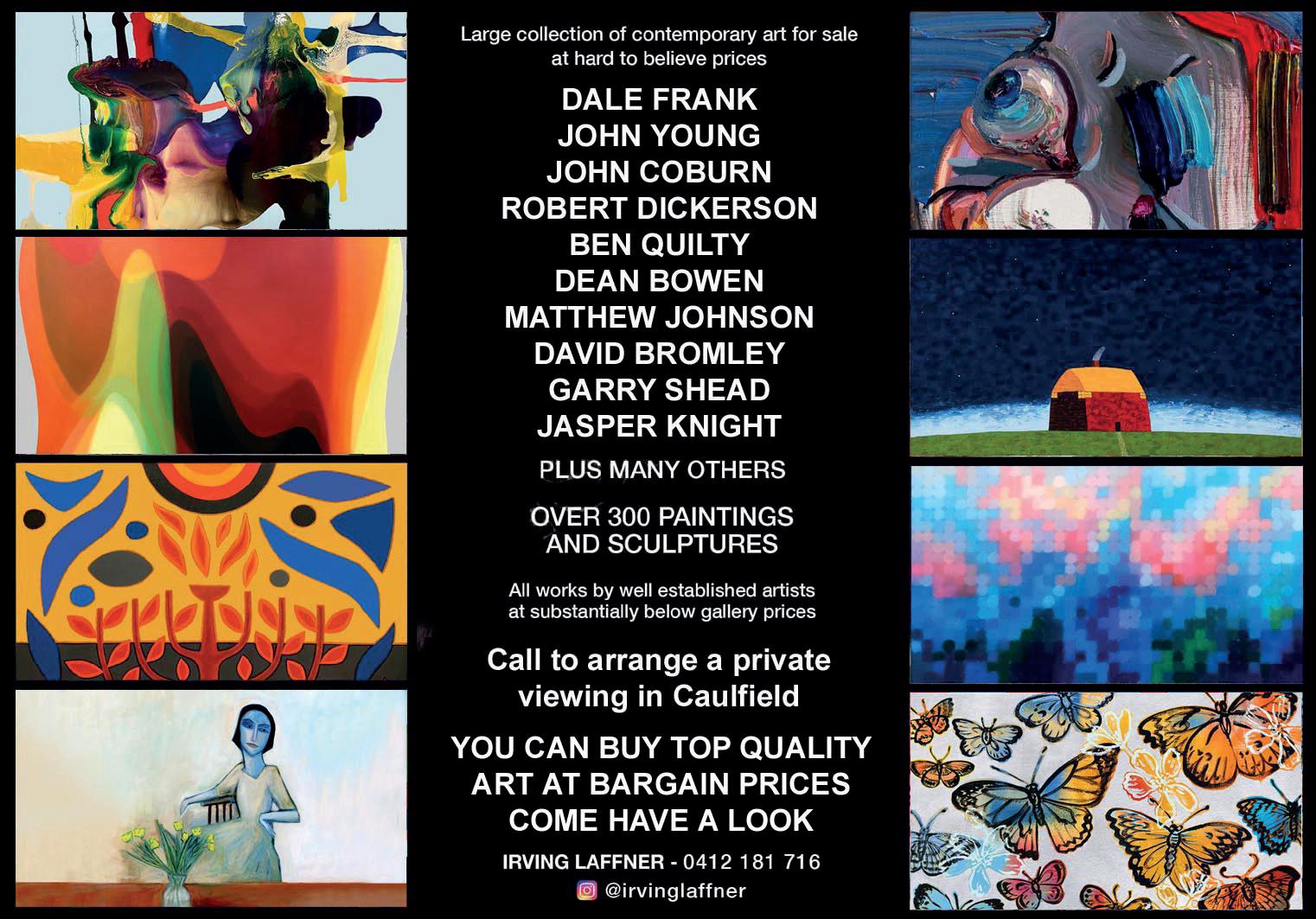
Yoni Glatt has published more than 1,000 crossword puzzles worldwide, from the LA Times and Boston Globe to The Jerusalem Post. He has also published two Jewish puzzle books: "Kosher Crosswords" and the sequel "More Kosher Crosswords and Word Games".
ANSWERS PAGE 13
In a world where amusement and compassion intertwine, there are extraordinary individuals known as clown doctors.

Recently, I had the privilege of joining them on a ward round at the Royal Children's Hospital. What I witnessed was truly remarkable and unexpectedly impactful.
The combination of joy, laughter and empathy created something special.
As I entered the hospital, I felt a sense of excitement. I soon encountered Drs Sunny and Fantastic, the ever-jubilant clown doctors, dressed in vibrant, multicoloured outfits.
As soon as they saw me, they sprang into action, performing impromptu "plastic surgery" in the hallway.
They began by creating a playful atmosphere using soap bubbles. By so doing, they “sterilised” the air. Then came the moment I had been waiting for. They placed a red clown nose on me, instantly making me part of their fun-filled brigade.
Their presence brought warmth and happiness, lifting the spirits of everyone nearby.
Their colourful clothing was an antidote to the heaviness of illness
and suffering within the hospital walls. They transformed the otherwise dreary environment, infusing it with colour.
I walked alongside the clown doctors, captivated by their contagious hilarity. The children's faces lit up as they momentarily forgot their pain and immersed themselves in the surrounding joy.
Each clown doctor had a special talent and a unique gift for the children. Their mission was simple yet profound:
to bring lightness and laughter into the lives of these brave young souls.
I witnessed the incredible power of humour and compassion. It went beyond mere entertainment; it was about forging deep connections. The clown doctors listened attentively to the children's stories, fears and dreams.
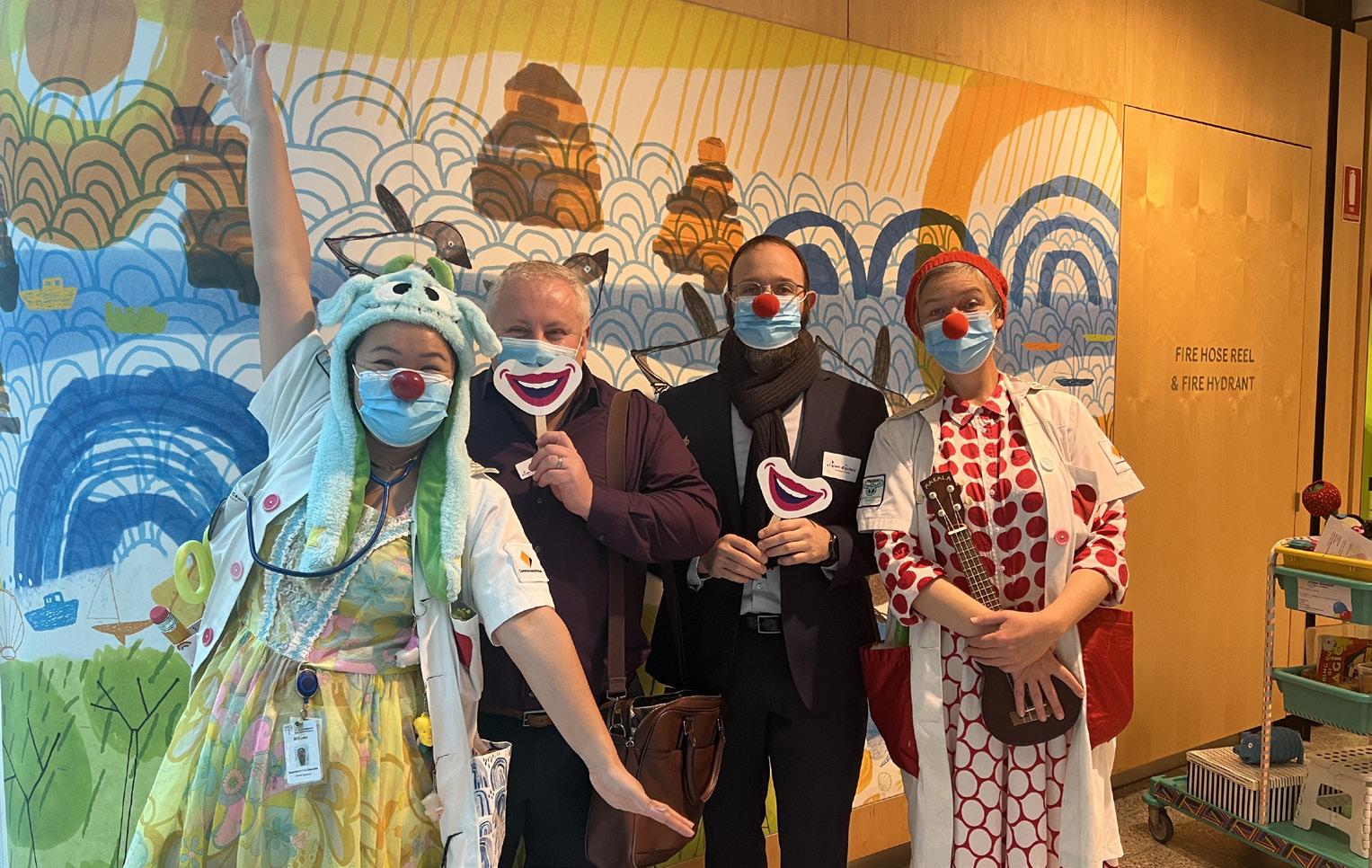
A touching moment came during our visit to a ward when paediatric blood collection was taking place. An
inconsolable child, consumed by dread, was visibly distressed.
Dr Sunny eased the youngster’s worries by playing a gentle nursery rhyme on her guitar. Within minutes, the child's attention had shifted. Across his face was a radiant smile.
The impact of the clown doctors was not limited to the children and parents. Even the hospital staff felt uplifted by their presence.
In a world often overshadowed by pain and suffering, these exceptional individuals bring light to the lives they touch.

Through their unique talents, they weave a tapestry of healing and hope.
Their profound impact on the lives of courageous children at the Royal Children’s Hospital is immeasurable. They serve as a reminder of the power of kindness.
Ultimately, the clown doctors teach us that true magic lies not in tricks or illusions, but in the power of a genuine smile, a heartfelt connection and the ability to bring light to even the darkest corners of our lives.
They leave an indelible imprint on our souls and inspire us to become healers in our own way, spreading love and joy to those around us.


Last month, UIA Australia held the official ribbon-cutting ceremony of a social club located in the Amigour home in Ashkelon, in southern Israel. The centre provides housing for vulnerable elderly citizens. They include Holocaust survivors and new immigrants.
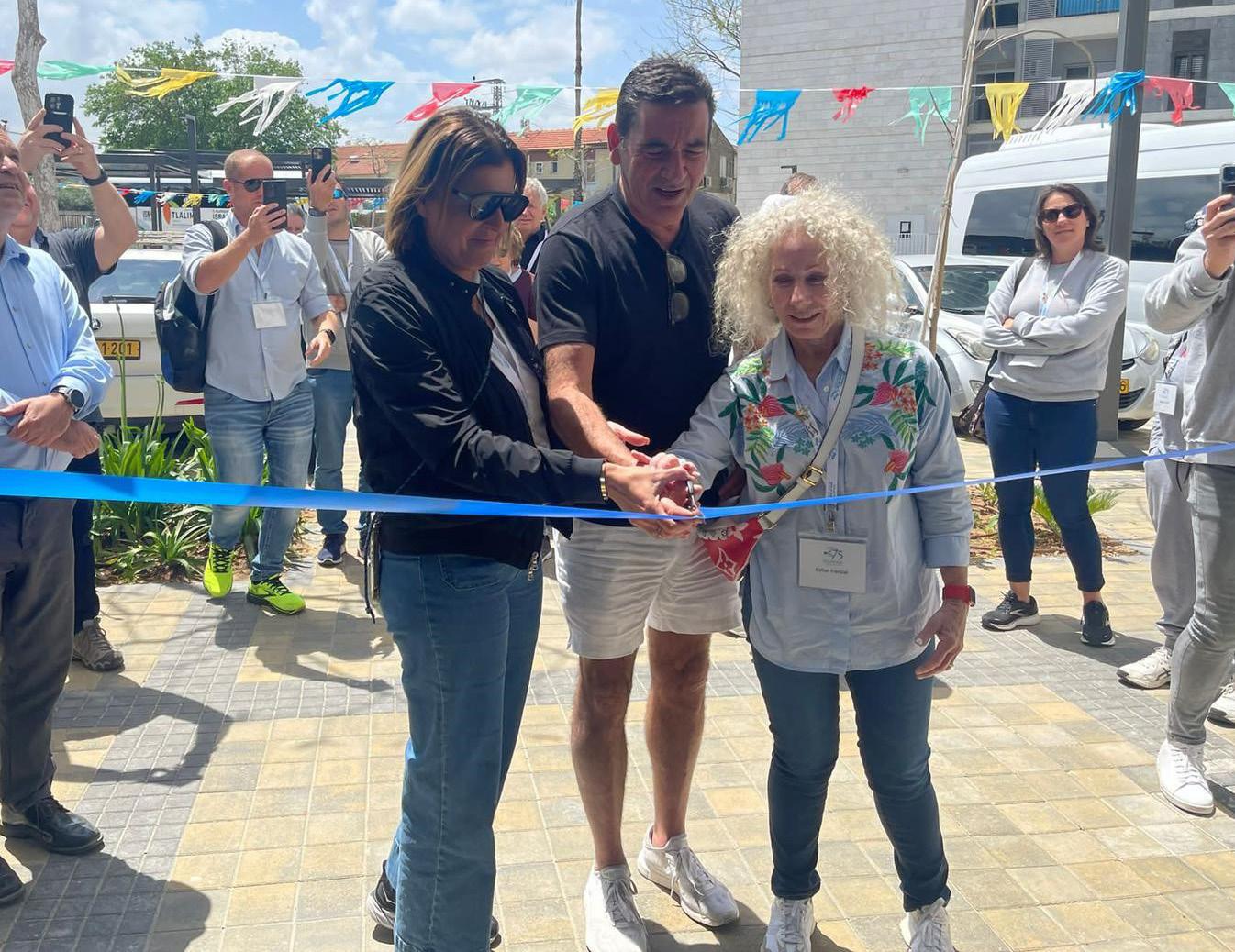
Amigour is Israel’s leading operator of public and sheltered housing for vulnerable senior citizens. Their need is a national priority supported by Keren Hayesod-UIA, the Israeli Government and The Jewish Agency for Israel.
The social club was built from funds raised by UIA through its inaugural crowdfunding Giving Day in November 2020. The campaign, which raised $2.4 million, broke Charidy's record for generating the most money and having the highest number of donors (over 2,500) for a Jewish organisation in Australia.


The campaign reached its initial target of $1.5 million within four hours of starting and had the support of about 250 volunteers around Australia. All funds raised locally were matched by the Israeli Government.
UIA was pleased to facilitate the official opening, inviting participants
from its Major Donor Mission who saw firsthand the impact of their support. Many of these Mission participants matched the funds raised by UIA for Amigour. They were honoured with plaques at the facility, cementing the final steps of a successful fundraising drive, which
This past month I spent time with my family in New York and Los Angeles. Part of the reason I was there was to celebrate a family wedding.
I spent a shabbat with cousins, uncles, aunties, grandparents and great grandparents-in-law at a campsite retreat in Pennsylvania.
The camp was full. The efforts involved in coordinating such an uplifting and important shabbat program were mammoth.
It was inspiring to have so many of my wife Mushka’s extended family with us.
Mushka’s grandfather Zalman Schmukler – a child survivor of WWII – was emotional. He gave thanks to Hashem for being able to celebrate with so many of his descendants. He spoke about being a boy in Russia. When he was one-anda-half years old, his father – Meir Eliezer –was sent to the frontline. Tragically, he was killed and so Zalman and his six-month-old brother, Efraim, were left to be raised by their mother, Raizel.
Zalman recounted the immense poverty he felt. During this time, he would go to the local market, where he would pick up discarded radish leaves from the floor. To this day, he can remember the bitter taste.
The family was able to leave Russia on fake passports and settled in Montreal,
before moving to the US.
He attributes his deep love of Torah and mitzvot, and instilling these values in his family, for the many blessings he has had since. They say that hard times create a greater sense of understanding of the world, with people rising to the challenge.
Mushka’s grandfather is a prime example of what can be accomplished with hard work and emuah (faith) in G-d.
My time spent in the US was to refresh my spiritual batteries, surrounded by so many of Mushka’s rabbinic and rebbetzin cousins.

Each of them brought fresh ideas and thoughts on how to build thriving Jewish communities.
culminated in a life-changing centre for vulnerable Israelis.
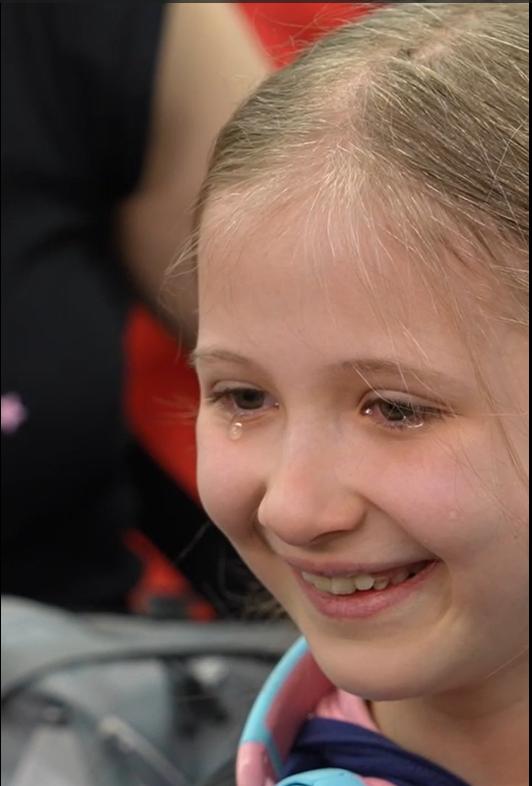
Amigour’s CEO Erez Shani, who attended the ribbon-cutting ceremony, said there are currently 597 elderly men and women living there, more than a third of whom are Holocaust survivors.
Besides receiving housing, Amigour residents participate in Hebrew and English language classes, exercise classes and lectures on health and nutrition. They attend handicrafts’ workshops, choral groups, computer classes and more. These provide intellectual and cultural stimulation, along with social interaction. Trips around Israel, visits to museums and the theatre, and holiday celebrations offer further opportunities for personal enrichment. On-site staff include social workers, diversional therapists and caregivers who ensure residents’ needs are met.
UIA Australia president Esther Frenkiel OAM cut the ribbon at the Amigour social club opening alongside Victorian president Peter Horovitz and immediate past president Hayley Southwick.
Mrs Frenkiel said it was “wonderful for the Australian community to see the great result of their continuing generosity. It was an absolute privilege to be there and appreciate the wonderful work of KH-UIA.” Amigour provides 6,000 apartments in 57 homes for some 7,500 residents, but the need is constantly growing, with about 27,000 elderly still lacking proper housing in Israel.
Follow UIA on Facebook and Instagram (@uiaaus) for updates on Amigour and upcoming campaigns and events.
The world’s most popular doll has a long Jewish history.
In Greta Gerwig’s upcoming movie Barbie, the doll heads out into the real world with her beau Ken on a lifechanging adventure washed in pink.
This ubiquitous plastic doll – with her mountains of accessories, from clothes to cars and even houses – enjoys annual sales in excess of US $775 million. Barbie continues to be in the news: a new version of the doll with Down’s Syndrome, debuted in April 2023, has been a huge hit.
Yet much of Barbie’s history – and the Jewish influences on the toy – remain little known. Here are five Jewish facts about Barbie.
1. Pioneer inventor
When Barbie’s inventor, Ruth Moskowicz, was born in 1916, her family was finally settling down after years of upheaval. Ruth’s father Jacob was from the Russian Empire and like many Jews in Czarist Russia had been drafted into the army. Jews were forced to serve for 25 years, far longer than other conscripts.
Jacob escaped from his unit and boarded a ship bound for America. A talented ironsmith, immigration officials suggested Jacob settle in Denver, where his skills could help build the new railroads. After years of work, he was able to bring over his wife and seven children from Poland. Ruth was born in Denver, their tenth and youngest child.
Ruth met her husband Elliot Handler –another child of Russian Jewish immigrants – at a Jewish dance when they were teenagers. They eventually moved to Los Angeles and experimented with building furniture out of the new plastics that were being invented at the time. Ever the hardnosed businesswoman, Ruth worked as an equal partner with Elliot.
When Elliot was drafted during World War II, Ruth worked to sell plastic items she and Elliot designed under the auspices of their new company, Mattel. After the end of the war, Ruth and Elliot began to shift their manufacturing focus to plastic toys, tapping into the newfound prosperity of peacetime.
While Ruth and Elliot weren’t traditionally observant, their Jewish identity was always central in their lives. As Mattel’s success grew, the Handlers became major philanthropists in Los Angeles, supporting an array of both Jewish and secular causes. “That was our training, our background,” Ruth explained, “the Jewish ethic”.
In her book Barbie and Ruth: The Story of the World’s Most Influential Doll and the Woman Who Created Her (2009), author Robin Gerber describes Ruth’s reaction to the start of the Six Day War in Israel in 1967. Ruth had always been a large donor to the United Jewish Appeal in Los Angeles; when war was declared, she phoned them up and asked what she could do to help. The phones were ringing off the hook. The person answering replied: could she please come down to the UJA offices and help field phone calls?”
Ruth, the president of Mattel, one of the largest companies in the US, had an incredibly busy schedule, yet she dropped everything and raced downtown to field phone calls. Within days, she’d set up an efficient system of answering calls and accepting donations from people who wanted to support Israel’s war effort and returned to Mattel. “That’s what I call public service,” she said. “I felt very good about it.”
loved it. They embraced the adultlooking doll and acted out their own imagined futures while they were playing. Dr Dichter advised Ruth not to market Barbie as a doll, but as a natural extension of girls’ self-expression. Barbie became one of the first toys advertised on television and the term “doll” was barely used. Launched in 1959, Barbie caught on like wildfire. Girls revelled in their new ability to create glamorous make-believe worlds using their new toys. The dolls were unapologetically girl-centric. Mattel launched a male doll named Ken (named after the Handler’s son) in 1961, but he got second billing. In the world of Barbies, girls were allowed to envision adult life with women firmly centre stage.
4. Drawing on the Jewish value of diversity

2. Listening to girls
Barbie’s genesis came one afternoon as Ruth Handler watched her young daughter, Barbara, and her friends playing with paper dolls.
In the 1950s, toy companies primarily made baby dolls for girls to play with. It was naturally assumed that all girls aspired to feed and bathe a tiny baby, and nothing more. There were a few older-looking dolls for sale, but these often looked like giant versions of babies and were more grotesque than glamorous. It took a Jewish mother to observe real-life
looked inappropriate for children. Ruth changed the features, creating a more wholesome-looking doll.
3. Asking girls what they wanted in a toy
This new doll – dubbed Barbie, after Ruth’s daughter Barbara – was so different from anything else in the American market, Ruth wanted to proceed very cautiously. She turned to Dr Ernest Dichter, another Jewish innovator, a psychotherapist from Vienna who’d fled Hitler and moved to New York, for help.
Ruth and Elliot Handler often credited their immigrant Jewish background with rendering them open minded. Having experienced antisemitism, they were determined to see others for who they were, instead of through the prism of harmful stereotypes.
From its beginnings in the 1940s, Mattel resisted the racial segregation that was the norm in other American factories.
The Los Angeles Conference of Community Relations wrote a letter to Mattel in the 1940s, noting that “a tour of your plant is like walking through the United Nations. People of different races, various religious faiths, handicapped people, elderly people all working as a unit. You have set an example that might well be followed by business people everywhere.”
In 1968, Mattel released a Black doll named Christie who was billed as Barbie’s “best friend” and launched another Black doll named Julia the following year. The company released its first Black Barbie in 1980. Today, Mattel sells over 170 different types of Barbie, with varying skin tones and hair colours, allowing children to find a Barbie doll who looks very much like them, if they choose.
5. Drawing antisemitic ire
Ruth Handler passed away in 2002; Elliot Handler died in 2011. Their company, Mattel, went public in 1960. Yet in some quarters, Barbie is still seen as an intensely Jewish toy.

girls and see that they wanted something more.
Barbara and her friends cut out paper dolls from McCall’s magazine and dressed them in delicate paper outfits. Then, they each held up their dolls and made them talk, imitating adult conversations. “I knew that if only we could take this play pattern and three-dimensionalise it, we would have something very special,” Ruth Handler later described.
In 1956, the Handlers took a long summer vacation to Europe and Ruth found the sort of doll she’d dreamt of creating: a German “Bild-Lilli” doll. In the 1950s, these were popular joke gifts across central Europe. Bild-Lilli grew out of an off-colour newspaper cartoon in the Bild-Zeitung newspaper and there was something intensely seedy about the dolls, which were meant to be adult gag gifts given on occasions like bachelor parties. Despite this troublesome connotation, the dolls were well made and came with beautiful clothes. And little girls loved them.
Ruth bought a few to take back home with her. When she suggested creating something similar, her Japanese suppliers were aghast, protesting that the dolls
Back in Vienna, Dr Dichter used to see patients in his office, which was across the street from Dr Sigmund Freud’s. In the United States, he gave up practicing medicine and became an early pioneer of what he called motivational psychology, and what today is more commonly called marketing. Dichter’s genius was in asking consumers detailed questions about what they wanted and how they thought about different products. Previously, it was more common for company chairmen to guess what their customers were looking for.
Dr Dichter leapt at the chance of working with Ruth Handler on Barbie. The field of marketing to children was in its infancy and the adult-looking doll that Ruth wanted to sell was highly unusual. Critics complained that it was inappropriate to give girls adult-looking Barbies. (If Barbie were scaled up to human-sized, she wouldn’t be able to stand up on her undersized feet and would be severely malnourished.) Yet the prototypes were hits with girls.
Dr Dichter interviewed 191 girls and 45 mothers. He found that the mothers uniformly hated the Barbie prototype they were given to review, but the girls
It’s been banned in Kuwait since 1995. Iran tried banning Barbie the following year, and launched their own “Islamic” dolls that they encouraged Iranian girls to play with.
After a few years, officials abandoned their efforts to stop the sale of Barbie dolls in the country. Barbie was banned in Russia in 2002 by President Vladimir Putin, who accused the doll of being Western. In 2003, Barbie was banned in Saudi Arabia for being “Jewish”; Saudi Government officials describe the toy as “Jewish Barbie”.
Yet even in places where it is banned, Barbie dolls are often available for purchase on the black market. Ruth Handler’s creation touches something deep inside girls, as they navigate the world around them through play. There’s much to criticise, including Barbie’s impossibly perfect-looking figure and overly thin physique. But Barbie also allows girls to act out their dreams of becoming women.
With robust sales, an ever-increasing number of variations and a highly anticipated feature film, Barbie – drawing on her Jewish past – has a very bright future.
Foodie Rose Elaine Benjamin has just written a book of her favourite recipes that have been passed down through successive generations of her family.


An observant third generation Jewish Singaporean who lives in Sydney, she celebrates Shabbat each week and loves both Jewish and Asian cuisine –savoury and sweet.
A typical discussion at her table involves how to prepare local dishes while adhering to the kosher dietary laws.
Rose says lockdown during the COVID-19 pandemic gave her time to digitise the recipes she had written on scraps of paper and on her phone.
“Those who know me well know that I like to be constantly busy. I decided that it was time to tackle my book project. Of course, when my relatives caught wind of what I was doing, I received more recipes. “Thus, I began curating, deciding on the Jewish recipes I just had to include, and selecting continental and Asian ones that I could kosher.
"Over time, I expanded my collection from 65 recipes to the 101 that appear in the 236 full colour pages of Rose’s Family Favourites."
They include 21 salads, sauces and dips, 37 Asian and Continental dishes, 25 Singapore Iraqi Jewish cuisines and 18 desserts.
“At the same time, my family enjoyed their favourite comfort foods that left my kitchen hot and smelling and tasting wonderful.”
However, perseverance paid and spurred on by her father, Joseph and her children Andrea and Aaron, she completed her passion project.
She said the result was a journey of self-discovery, during which she learned to appreciate her family even more.
“It is said that ‘too many cooks spoil the broth’, but this book would not have been possible without the many cooks in my life – my nanna, mum, mother-in-law, aunts, cousins and friends.”
Retailing for $90 plus postage, you can purchase Rose’s Family Favourites via WhatsApp (+61 417 271 056) or by emailing rosesfamilyfavourites@gmail.com
You can follow Rose on Instagram @ rosesfamilyfavourites and on Facebook @ rosesfamilyfavourites
Melbourne Jewish Report Disclaimer:
Except where expressly stated otherwise, content in The Melbourne Jewish Report is provided as general informations only. The articles in this paper have been contributed by a third party. The opinions, facts and any media content here are presented solely by the author, and The Jewish Report assumes no responsibility for them. It is not intended as advice and must not be relied upon as such. You should make your own inquiries and take independent advice tailored to your specific circumstances prior to making any decisions. We do not make any representation or warranty that any material in the papers will be reliable, accurate or complete, nor do we accept any responsibility arising in any way from errors or omissions. We will not be liable for loss resulting from any action or decision by you in reliance on the material in the papers. By reading the papers, you acknowledge that we are not responsible for, and accept no liability in relation to, any reader’s use of, access to or conduct in connection with the papers in any circumstance. Photographs submitted by individuals or organisations are assumed to be their property and are therefore not otherwise credited. All articles in this paper have received the expressed consent of the author to publish in this paper.
The Jewish Report; ISSN 2204-4639
Publisher: The Jewish Report Pty Ltd (ACN 167302981)
Distributor: TJR Distribution Pty Ltd ACN 165158029
Comments or suggestions to: editor@thejewishreport.com.au
Article submissions to: www.thejewishreport.com.au/article-submission-guidelines
Advertising: editor@thejewishreport.com.au
Website: www.thejewishreport.com.au
Printer: Spotpress Pty Ltd

Pride is about self, not anatomy or sex and that's why the community must stop subjecting the queer people in its midst to fear and shame.
I couldn’t believe what I saw. A mother smacked her son’s hand and, with a look of disgust, threw what he was holding on the floor. The irate mother was not reacting to her son holding a piece of roadkill. Rather, she did this in response to her son holding a Jewish Pride flag at the Celebrate Israel Parade.
Upon witnessing this interaction, as well as other similar ones between parents and children along the parade route, I had several reactions. As a Jewish Queer Youth (JQY) staff person, I felt angry and protective of our vulnerable teens, who often come from families where their queer identities are not accepted. They took the risk to march at a public event with such a significant Orthodox Jewish presence and they deserved to be greeted with encouragement, not scorn. And, as a psychologist, I was acutely aware of the ripple affects this mother’s actions would have. The son surely understood the message loud and clear: queer is bad, icky and something to stay far away from. If this child turns out to be queer, they will likely have a more difficult time understanding and accepting their identity, and they are at increased risk of mental health problems. And, if the child turns out to be straight and cisgender, his mother’s lesson is another thing he will have to unlearn, so that he can be accepting of queer people in his life, who may turn out to be
his children or close friends.
Despite my shock, this mother’s behaviour, while highly problematic, is not entirely surprising given the Orthodox community’s misunderstanding of Pride and queer identity. Because June is Pride month, LGBTQ issues are bound to be discussed in the Orthodox community – whether in sermons, at kiddushes, or during shabbat meals. As such, there is no more opportune time to provide some education about what Pride is and is not, from my perspective as a psychologist.
Let’s start with the basics. Pride literally means “reasonable self-esteem” or “confidence and satisfaction in oneself.” Queer people, particularly those from unaccepting or less accepting environments, such as the Orthodox Jewish community, are highly prone to feeling shame just for being who they are. The manifestations of shame are as diverse as the queer community itself. Whether it’s a gay man who repeatedly makes up stories as to why he isn’t interested in being set up with a woman, or an observant trans person who stopped attending synagogue because of not knowing how they will be received, the day-to-day experiences of many queer people in the Orthodox community can be both fear-laden and shame-ridden.
A common refrain heard in Orthodox spaces regarding LGBQ people is: “Why do you need to tell everyone about your sex life?” This question, almost always rhetorical in nature, reflects a vast overreading of what it means to be openly queer. Identifying as queer is not a declaration of one’s sexual behaviour. Rather, it is a statement of how one sees themself as an individual, given
their communal and social context. For example, we cannot assume that because a man openly identifies as gay, he must be engaged in sexual behaviour with other men. Gay men, like straight men, vary in their sexual practices, anywhere from abstinence to out of control sexual behaviour (sometimes referred to as sexual compulsivity). Rather, it is more accurate to understand a man’s identification as gay as a statement about how he fits into his community and its cultural expectations. In other words, for a man in the Orthodox community, “I’m gay” doesn’t necessarily mean anything more than, “something about me and my experience doesn’t fit with the Orthodox man-and-woman marriage model.”
For trans folks, the focus of faulty assumptions is not about sexual behaviour but is, instead, about a person’s anatomy. To be clear, publicly identifying as transgender does not indicate anything about the person’s anatomy. Some trans people take hormones, some undergo one or more surgeries, some do both and some do neither. For a trans person in the Orthodox community, coming out doesn’t necessarily mean anything more than “my gender identity doesn’t correlate with my sex assigned at birth and as such my experience of the Orthodox gender binary is complex.”
Being queer in the Orthodox world is not only complicated and challenging but also fraught with opportunities for being misunderstood, invalidated, rejected, oversexualised and seen as “other”. Pride is the queer community’s intentional effort to counter the psychological effects of these communal realities. We wear rainbow
gear, fly colourful flags, and apply glitter – all to feel positively about who we are and reaffirm our worth as people and Jews in the Orthodox community who deserve dignified meaningful lives. Pride is the queer community’s annual vacation from shame and it is welldeserved.

The mental health statistics for queer youth are quite alarming. According to data from Adolescent Behaviours and Experiences Survey (ABES), released by the Centers for Disease Control and Prevention, gay, lesbian and bisexual youth are more than twice as likely to report depressive symptoms, more than three times as likely to have seriously considered suicide and more than four times as likely to have made a suicide attempt within the 12 months prior to their participation in the study, which was conducted during the pandemic. And trans youth fare even worse. A study published in the Journal of Adolescent Health showed that trans and nonbinary youth reported significantly higher rates of depressed mood, seriously considering suicide and suicide attempts compared to cisgender queer youth. And, coming from a rejecting family is a risk factor for depression and suicide attempts amongst other health outcomes.
So, the next time the subject of Pride or queer outness comes up in synagogue, at the shabbat table, or at a parade, please remember that they are rooted in mental health. Pride isn’t about anatomy, surgery, or sex; it’s about self.
Dr Jeremy Novich is the psychologist at Jewish Queer Youth, an organisation that supports and empowers LGBTQ youth, aged 13-23, from Orthodox, Hasidic and Sephardic homes
The Talmud is the main text of rabbinic Judaism and one of the most important sources of Jewish law. Divided into 63 tractates, it deals with thousands of scenarios and records the discussions of ancient rabbis talking about the minutiae of Jewish daily living. The laws that come out of these discussions form the backbone of Jewish practice.
The study of the Talmud is notoriously difficult, as it has more than 2,000 doublesided folios. The breadth of subject matter discussed is vast. To get through these texts can take a lifetime.
However, in an effort to change the narrow focus on certain tractates of Talmud, in 1923 a Polish rabbi, Meir Shapiro, proposed that Jewish people should study one double-sided page of Talmud each day. This method, known as “Daf Yomi” (daily page), helped people become familiar with the entire Talmud, especially some of the more obscure tractates. Using this method, it takes a person seven and a half years to complete the entire Talmud.
This method of studying Talmud has taken off like wildfire. In 2023, we are working through the 14th Daf Yomi cycle, which has three more years to run. At the start of 2020, when the 14th cycle began, I threw my hat in the ring. Each day I sit with my Talmud and work my way through a difficult page. It is a
grounding experience, one that brings me much joy, as I delve into ancient concepts that are still practised.
I love being part of the biggest global Jewish book club, where each day, no matter where they are in the world, Jewish people study the same page. In recent years, podcasts and study aids have been established to help this growing phenomenon. The study is solitary, but I don’t feel alone. Like me, a small group of Australian women are breaking their teeth understanding these ancient texts. I have friends in Melbourne who study with me, and I know I am part of the global study group. Women help each other with Daf Yomi on WhatsApp, Facebook and Instagram. We share tips, study aids and encourage each other.
Interestingly, while the Talmud has much to say about Jewish women, the discussion largely excludes their voices. Historically, Talmud study, with all its rigours, was deemed to be the domain of Jewish men. This is slowly changing as Jewish women become more educated and add their voices to discussions.
Jewish women may not have had their voices in the Talmud, but in the 21st century they are gaining the skills and confidence to add their voices in the most important and meaningful ways possible: through understanding the tradition’s foundational texts.

Nomi Kaltmann is president of the Jewish Orthodox Feminist Alliance Australia.
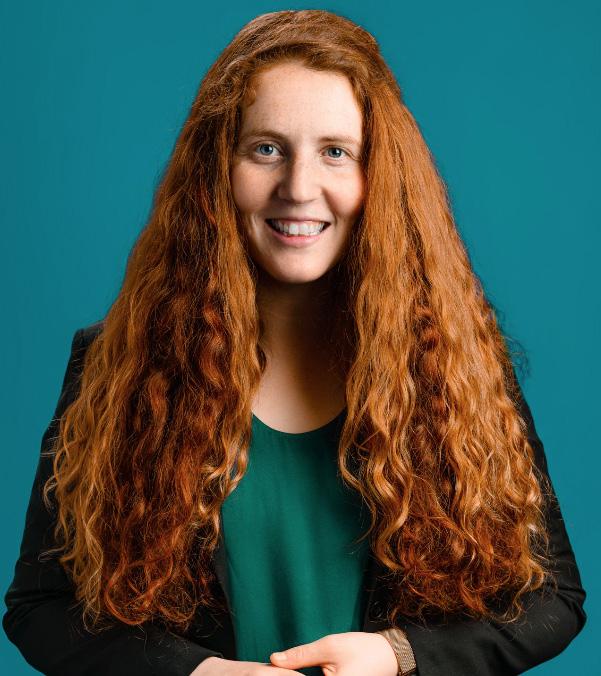
1. Red – Yam Suf is the Biblical name for the Red Sea
2. The Embassy of the United States of America
3. Arabella
4. Two days. The letter was dated November 2, 1917
5. Member for Berowra
6. The Grace After Meals
7. c) 1910
8. b) Rav Nachman of Breslov
9. Mikhail Gorbachev
10. 11th Century CE
11. Phil Spector
12. Song of Songs (Shir HaShirim), Proverbs (Mishley) and Ecclesiastes (Kohelet)
13. Sara Schenirer
14. Avraham Fried
15. The 1920s
16. 7 years (Operation Moses took place in 1984, Operation Solomon was in 1991)
17. ... after the establishment of the State of Israel
18. Menachem Begin and Ariel Sharon
19. He was born on February 13, 1944, in the London Underground station of Highgate while the station was in use as a shelter from German bombing during World War II
20. Yeshiva University
21. Gateshead
22. They both journeyed into space. Volynov was chosen as one of the Soviet Union’s inaugural cosmonauts and flew into space in 1969. Ilan Ramon became the first Israeli astronaut, when he went into space in 2003. Tragically he and the six other crew members were killed when the spacecraft Columbia disintegrated during re-entry.
23. a) Afula
24. Moses
25.
a) Paul 6th
b) John Paul II
c) Benedict 16th
d) Francis
Jewish answer – MOSHIACH (also spelled MASHIACH). Here is a list of some common words (“yes”, we know there are more words in the dictionary that can work, but these words are common to today’s vernacular): ACHIM, AMASS, AMISS, CHACHAM, CHACHMA, CHAMSA (HAMSA), CHAMSAS, CHASM, CHASMS, CHIASM, CHIASMIC, CHIASMS, COMAS, COMMA, COMMAS, COMIC, COMICS, COSMIC, COSMOS, IMAMS, MACHISMO, MACHO, MAMAS,
MAMMASH, MIMIC, MIMICS, MISHMASH, MOCHA, MOCHAS, MOOCH, MOSAIC, MOSAICS, OSMOSIS, SCAMS, SCHISM, SCHISMS, SHAMMASH, SIMCHA, SIMCHAS, SHAMS, SMASH, SMICHA, SMOOCH and SMOOSH.
Questions/comments/compliments, please email Yoni at koshercrosswords@gmail.com
ARGYLE PINKS DIAMONDS as well as other COLOURED DIAMONDS are available at Ian Sharp Jewellery. Start your Pink journey with us today. There is nothing on earth quite like an Argyle Pink Diamond. The returns on pinks have outpaced the stock market and the Argyle mine has ceased production as of the end of 2020. With no more new supply, now is the time to get your rare Pink Diamond.
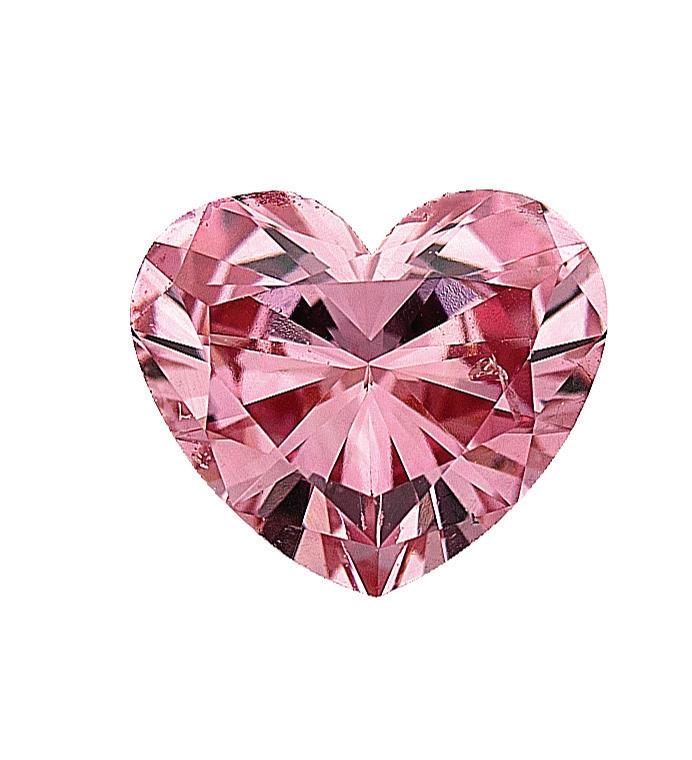


Kadimah Yiddish Theatre’s 2022 production of Yentl at Arts Centre Melbourne was understandably lauded.
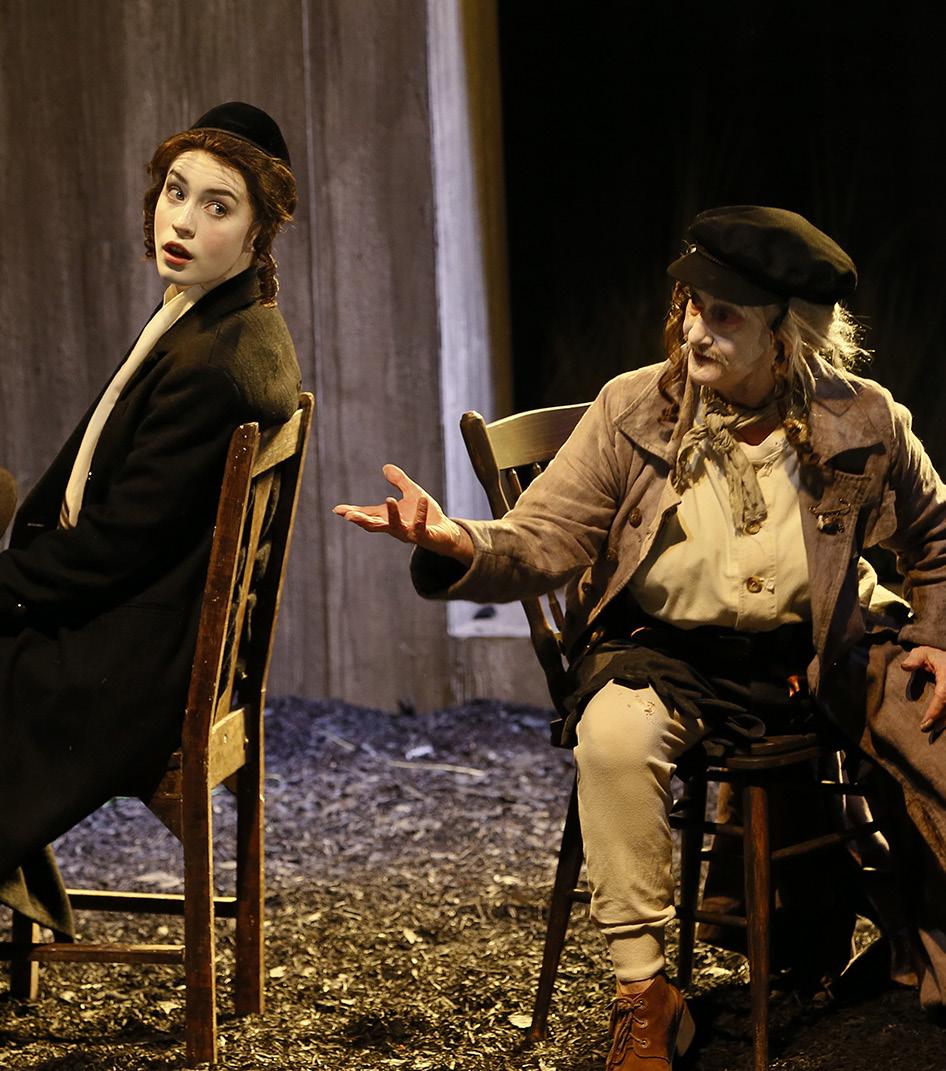
Now the play has received accolades at the 40th anniversary of the arts’ industry’s night of nights, claiming four Green Room Awards.
Melbourne’s premier, peer-presented, performing arts industry awards recognise excellence in opera, dance, cabaret, musical theatre and independent and mainstage theatre.
In Yentl’s title role, Jana Zvedeniuk won the Green Room Award for Outstanding Performance. She tied with Eryn Jean
Norvill in Sydney Theatre Company’s The Picture of Dorian Gray.
Yentl also took out the award for Outstanding Writing for the script by Gary Abrahams, Elise Hearst and Galit Klas, based on Isaac Bashevis Singer’s original Yiddish short story.
Dann Barber’s set design and Rachel Burke’s lighting design for Yentl beat fellow nominees from Melbourne Theatre Company, Malthouse, Sydney Theatre Company and Red Stitch Actors’ Theatre in the Theatre Companies Design Awards categories.
Kadimah CEO Rachel Chrapot said the company “has punched well above its weight to achieve a wonderful result, coming up against larger theatre companies”.
“We are so proud of the dedicated cast, crew and creatives who have produced thought-provoking and engaging bilingual theatre,” Ms Chrapot said.
Yentl was nominated for nine Green Room Awards. These also included Best Production, Outstanding Direction (Gary Abrahams), Outstanding Performance (Evelyn Krape), Outstanding Sound Design (Russell Goldsmith) and Outstanding Costume Design (Dann Barber).
Kadimah is a 112-year-old Jewish cultural centre, located in Elsternwick.
Kadimah Yiddish Theatre is one of its core activities, which it has championed since 1911.
It also offers Yiddish classes and conversation, as well as running concerts and festivals, such as In One Voice and the Melbourne Jewish Food Festival.
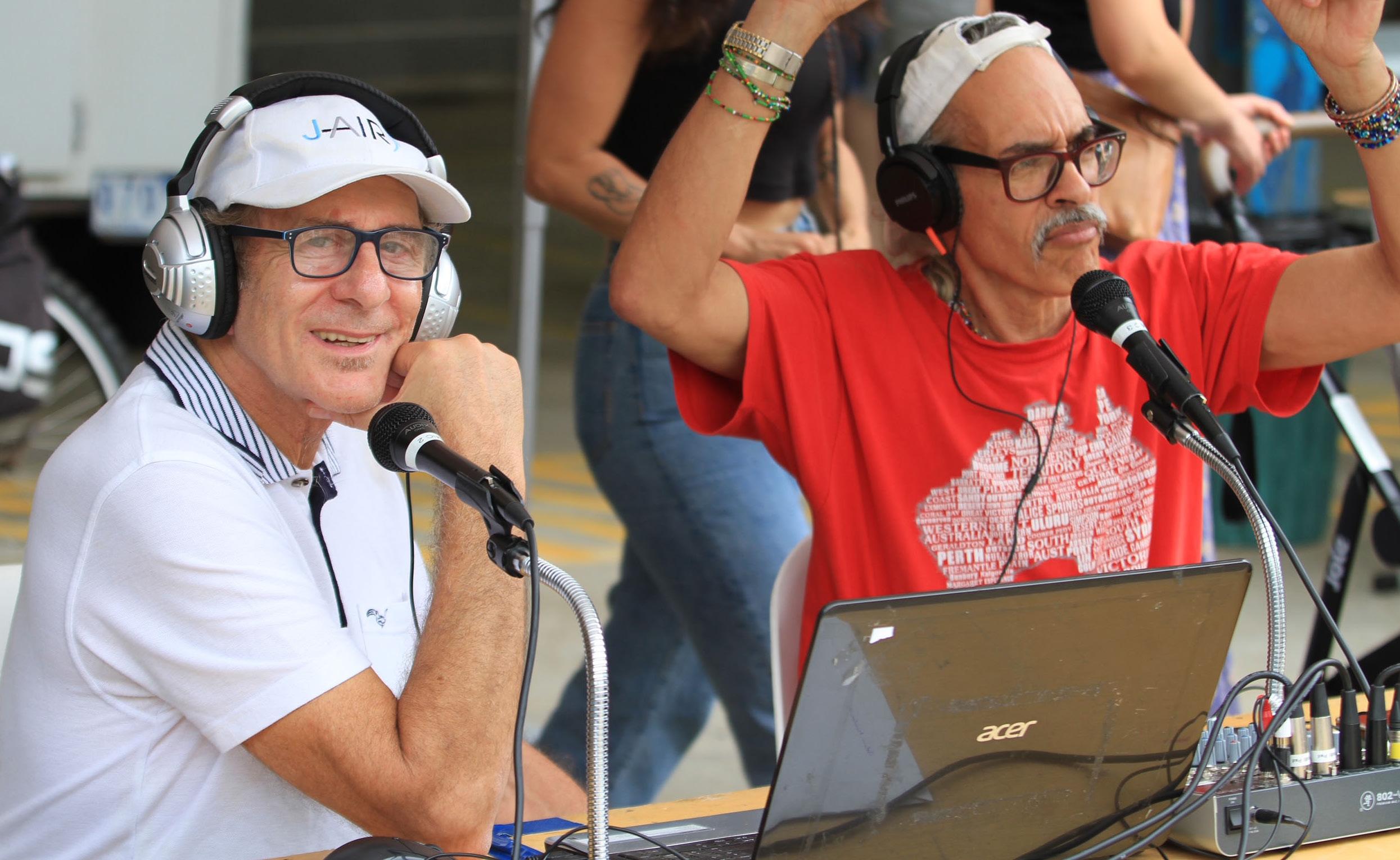
Earlier this month, the Jewish Museum of Australia opened the CHAGALL exhibition, which features the work of the creative genius Marc Chagall (1887-1985).
The showcase is a theatrical imaging and reframing of some of his larger scale public art pieces.
It is the work of curator Jade Niklai and exhibition designer Anna Tregloan.

They have collaborated to tell Chagall’s life story poignantly and dramatically.
Stained-glass window public art commissions from the UK, Paris, Germany, New York and Jerusalem are presented innovatively through projection and animation.
Theatre curtains divide the space at the museum and evoke a sense of drama.
In a symbolic nod to the museum’s first large-scale exhibition 28 years ago, the exhibition focuses on print making, poetry and public art.
It is dedicated to the institution’s visionary inaugural director, the late Dr Helen Light AM, and celebrates Jewish heritage and identity.
Chagall has long been considered one of the great artists of the 20th century.
He is remembered for his visual language and consideration of universal themes, such as joy, love and melancholy.
He combined the Jewish folkloric painterly roots of his native Russia and the Parisian avant-garde, with fauvist, cubist and expressionist styles.
In doing so, Chagall created a sensibility that was truly his own.
Curator Niklai said the exhibition showcases the breadth of Chagall’s work.
“It tells the story of Chagall as a 20th century visionary through his art, architecture commissions and poetry,” Niklai said.
What is on display weaves it way through the Jewish Museum’s permanent exhibition.
Located at 26 Alma Road, St Kilda, the museum is open from 10am to 5pm Tuesday to Friday and from 10am to 5pm on Sunday.
CHAGALL will remain a fixture until 10th December. For tickets, go to www.jewishmuseum.com.au
fuzzy seeds “float” in the air like fairy dust, the artists visualising good intentions.
equally spectacular when viewed from the inside or out.
BY ALEX FIRSTFollowing its success last winter, a new, gorgeous exhibition of colour and creativity returns to the Royal Botanic Gardens this year.
The after dark experience that is Lightscape features a stunning array of large-scale, colour-changing, illuminated sculptures.
All but two are fresh designs. Back to captivate anew is last year’s piece de resistance, Winter Cathedral, and the imposing Neon Tree.
In all, there are more than 100,000 tiny lights on show, overlaid by music.
You can follow one of two trails through the gardens to see everything. The full experience takes about an hour and a half.
First up for my wife and I was a light installation known as Pampas grass, a large flowering plant native to South America, featuring big fluffy seed heads. Several of them were lit up in many hues.
From “fluffy” to dead straight. Next was Herbum, neon green grass tufts with stems stretching up to eight metres high, topped with red flowers.
A giant Kashmir cyprus is a huge canvas for the checkerboard effect of light and shade.
Indiana Jones and the Dial of Destiny is a fitting tribute to one of the greatest action heroes of the big screen.

The ingredients that made this blockbuster series so watchable are back with a vengeance.
To see Harrison Ford return in one of his most beloved roles is terrific.
He first played Indy in 1981’s Raiders of the Lost Ark and last donned the fedora in 2008, in Kingdom of the Crystal Skull.
This time around, technology has allowed him to be de-aged, from the 79-year-old he was when he shot Dial of Destiny, to 37 at the start of the picture.
It is the war years and a nimble-footed Indiana Jones just manages to escape the evil clutches of the Nazis, who have purloined a surfeit of invaluable antiquities.
Much interest lies in an extremely rare artefact known as the Archimedes Dial, a device that purportedly holds the power to locate fissures in time.
Most keen to get his hands on it is Nazi Jürgen Voller (Mads Mikkelsen).
Then we cut to 1969.
Having spent more than a decade teaching at New York’s Hunter College, esteemed professor of archaeology Jones is preparing to retire to his modest apartment.
Particularly striking is Nura, which means place or country in Gadigal language. Drawing inspiration from traditional southeastern Australian tree carvings, they form an expansive outdoor gallery of glowing indigenous art.
A field of crocuses over a metre high gently sway and transform through different shades of colour.
The Fungarium are inflatable mushrooms that decorate a hill side and tiny “mushie” lights that sparkle amongst the undergrowth.
An undoubted highlight of Lightscape is known as Light a Wish. Enlarged, white
Also impressive is By the Birrarung. That is an ornamental lake containing indigenous representations of eels shaded in white light, around which is a multi-coloured neon glow.
Nearby, a giant tree and its reflection present an enormous, inspiring, natural artwork.
Created using bespoke structures and candles, a fire garden is spread over multiple lawns.
On the ground, is an artwork titled March of the Ants, which pays respect to the environment and caring for country and community.
In a similar vein is Walking on My Father’s Country, which presents as embedded footprints and represents the generations that have come before.
It is also well worth spending time at the sound and light show, featuring towering cascades of water shooting high into the night sky, on the lake in the Gardens.
Adjacent are Water Lilies, which were out of order the night we visited.
The Orb is a large, curved structure bursting with colour created by many LED lights.
Inspired by arched church windows, The Winter Cathedral is an immersive, welcoming tunnel of light, illuminated by tens of thousands of white LED lights. It is

Another “walk through” exhibit is a canopy of light known as Aurora, which pays tribute to the Aurora Australis or the Southern Lights.
And then you come to The Singing Forest. LED tape has been wrapped around trees, which “react” to the sound of music.
The Neon Tree is a magnificent oak illuminated in red neon strips.
And, finally, you reach a ghostly projection on a stump, the remains on a much-loved tree that stood for more than a century. It is a beautiful and eerie tribute to what was.
Lightscape is a mesmerising and most welcome addition to the fine winter offerings in this city. It is well worth seeing.
Entry is from $36 (off-peak) to $40 (peak) for adults and from $28 to $32 for children and from $128 to $144 for a family .
A single, anytime pass is $55.
Lightscape can be seen on Wednesday to Sunday nights at the Royal Botanic Gardens until 6th August, 2023.
For further information and to book tickets, go to www.lightscapemelbourne.com.au
Phoebe Waller-Bridge impresses with her “go getting”, if shady persona, never taking a backward step as Helena.
Mads Mikkelsen feels at home as the Nazi supervillain who will stop at nothing to gets his hands on the relic.
John Rhys-Davies makes a welcome return to the franchise, bringing good natured warmth and respect to his reappearance as doting Indy supporter Sallah.
Toby Jones is noteworthy for his cowardly representation of Indy’s WWII colleague Basil.
Ethan Issidore makes a good fist of his role as Helena’s agile, nimble fingered young protégé, Teddy.
And it is nice to see Karen Allen back –albeit briefly – as Indy’s wife Marion.
I loved the production design, particularly the attention to detail in the sets and settings.
But everything changes after a surprise visit from his estranged goddaughter Helena Shaw (Phoebe Waller-Bridge).
She is seeking the half of the Archimedes Dial that her father, Basil (Toby Jones), entrusted to Indy years earlier.
An accomplished con-artist, Helena steals the device and makes a swift exit to sell the treasure to the highest bidder.
Left with no choice but to go after her, Indy dusts off his hat and leather jacket for one final ride.
At the same time, Indy’s old nemesis, Voller – now working as a physicist in the US space program – has his own plans for the artefact.
In fact, it is a horrifying scheme that could change the course of world history.
There is a lot to enjoy and appreciate about Indy 2023.
It is so exciting to see Harrison Ford as the action hero – fisticuffs and all – that he was in his prime. He doesn’t put a foot wrong.
Notwithstanding some surprising moments though, the film becomes quite convoluted and, at two hours and 34 minutes, Dial of Destiny is bloated.
Prudent pruning would certainly have been in order, to produce an even more compelling finale.
Nevertheless, overall, the direction from co-writer James Mangold (Ford v Ferrari) is sound and the film should prove a fan favourite.
Rated M, Indiana Jones and the Dial of Destiny scores a 7½ out of 10.







